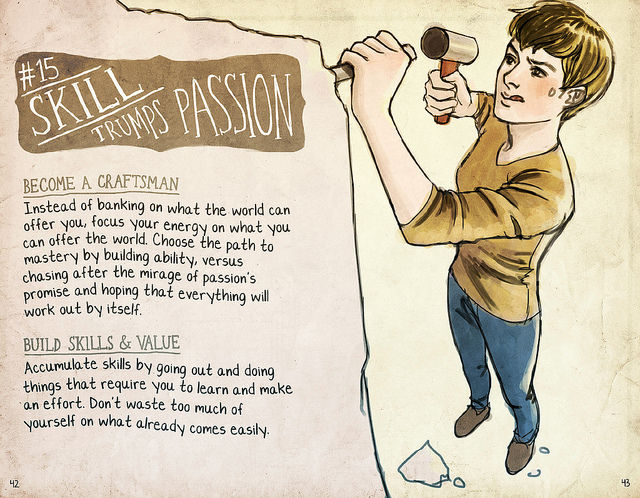This is the final article in our User Experience Maturity series. Read parts 1, 2, 3, 4, and 5.
Where will UX be in the hard-to-see future of the 2020s and beyond?
I think it will borrow a variety of characteristics from computer engineering, changing this “creative” discipline in ways that might seem unlikely given its present role and our assumptions about work related to the art and the design roots so important to the successful expression of user experience.
More frequent use of explicit design patterns, possibly expressed as open source software and libraries. Engineers often begin by using existing code that solves the problems they want to solve. It is taken for granted as the standard best practice, although once upon a time may have seemed threatening given all the time and jobs devoted to writing custom, one-off code. Remember when websites were all custom and unique? Today, few websites are truly custom, building instead upon templates, content management platforms, and e-commerce infrastructures. This practice will increasingly pervade the world of user experience, where we will agree on the best way to solve some of the easier problems and use those platforms to give us a leg-up in focusing on project-specific challenges.
Computers replacing people for completion of more incremental UX tasks and challenges. Recently a company called The Grid launched AI websites that design themselves. While their solution is unlikely to be the nemesis of the human-designed website, it is a shot across the bow to all digital designers that, yes, we, too can be replaced by machines. Realistically, the technology's most likely impact on the domain of user experience is in automating the smaller-scale, incremental evolution of existing systems. A/B testing is now an accepted way of trying out small changes and design tweaks. There is no reason in much of that process for there to be any human involvement whatsoever. Sooner than we think, the human will be removed entirely. Perhaps a human designer will introduce an alternate design for the system to consider, but the machine can do the rest. Everything from preparation, to data collection and analysis, to deploying the winning design, to passing along metrics and explanation to stakeholders can and probably should be entirely automated. Soon this will be a reality.
UX skills becoming more core to the general toolbox of knowledge workers. Again, we can look to software engineering for the example here. The far-flung campaigns of “everyone should know how to code!” have led to an interest in computer programming that has become truly mainstream. While much of this is driven by perceptions around what the jobs of the future will look like, some of it relates to the idea that the ability to code is a potentially valuable life skill in the future wacky world of technology. Yet, I suspect both of these initiatives are poorly conceived. Computer programming will be more based in libraries and reusable code in the future, to say nothing of artificial intelligence increasingly generating its own code. There will not be a giant job market for all, and perceived benefits from having some light ability to code is unlikely to serve us any better than conveniences like, say, knowing how to change the oil in our car by ourselves. On the other hand, core UX skills will prove increasingly essential for knowledge workers, as crisp problem solving and creative thinking increasingly define the value-add that human participants contribute to the corporate system. Research skills are an obvious example, empowering anyone, from marketing flack to product manager to software engineer, to determine context with clarity. Then, problem-solving tools like cardsorting are particularly useful for product managers as well as engineers. Indeed, to this point, the need for dedicated UX people is largely the result of the skills required to provide UX not being widely understood, and/or taken care of by people with those titles. In the future, our knowledge and skills will be absorbed into the work of other actors in the system. For us to maintain a role in the process we will need to develop more and different skills. This might manifest as those with a true art and design background being the practitioners with a key ongoing role discrete from other product disciplines, or it might require our gaining much deeper and more scientific insights related to genetics, psychology, sociology, and neuroscience. The one thing that is certain is that being trained in things like contextual inquiry and information architecture won’t be nearly enough for UX to remain relevant in the future.
So, what does this mean for both companies and practitioners?
For companies, not much. These shifts are years if not a decade away. So long as you keep prioritizing and investing in the quality of your user experiences, as the broader environment evolves so will the way UX manifests within your organization.
For practitioners, the path ahead is a little more uncertain. If you are already mid- or late career there likely is not much for you to worry about. Keep on keeping on. For those who are more early-to-mid-career, now is a good time to think about your relevance in the years ahead. If you are a trained designer or artist and can create beautiful things, you will probably be just fine as you are. If you are more of the liberal-arts-trained interaction designer type, or a researcher and strategist, you should think about ways that you can evolve with a changing landscape. This generally boils down to either branching into other job roles related to UX such as product management, or getting educated in advanced sciences and technologies that relate to human behaviour. Given that UX people are generally curious and enjoy learning new things, exploring different ways to evolve your knowledge and skills should prove enjoyable. In any event, proactively exploring new frontiers will keep you relevant and ahead of the changes sure to come in the future.
